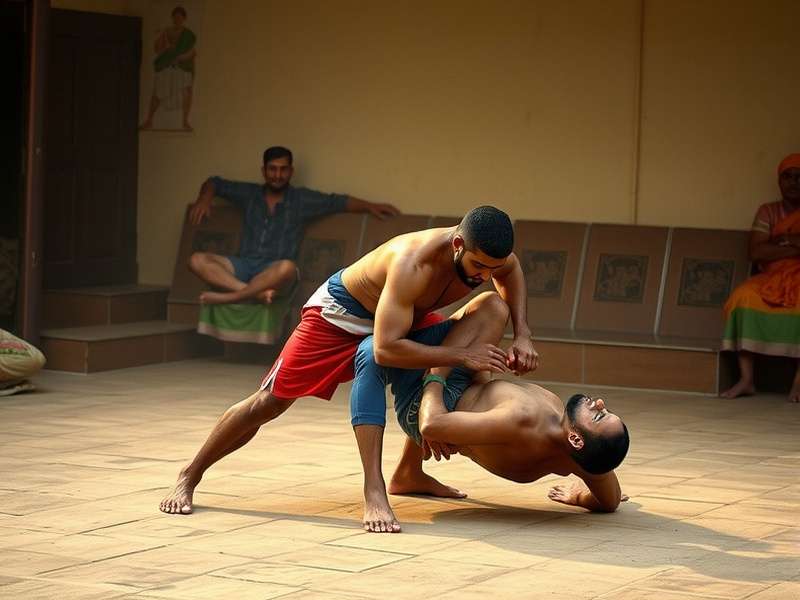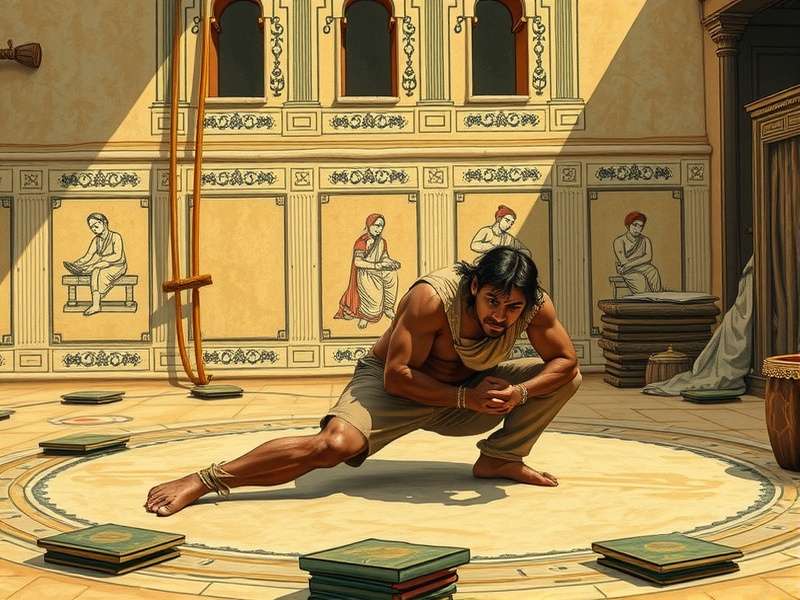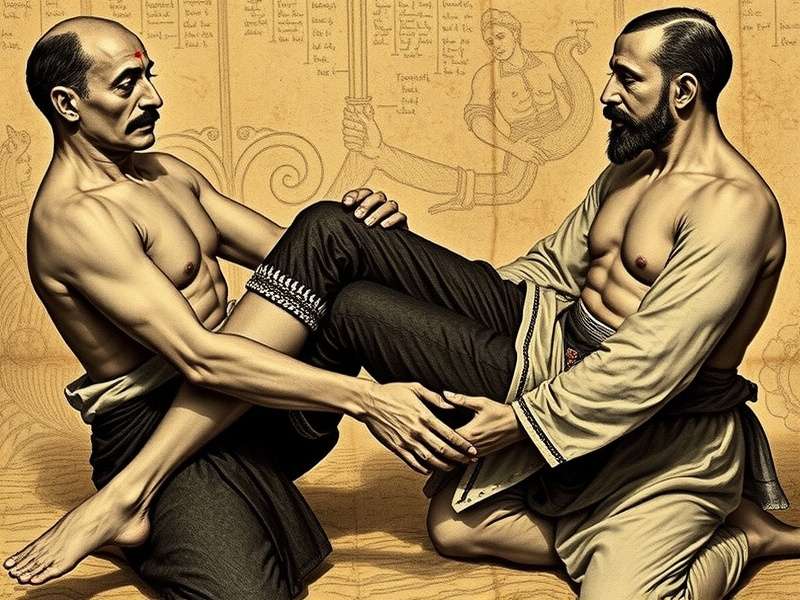Goa Grip Grapple: The Traditional Indian Wrestling Art
Goa Grip Grappleis an ancient Indian wrestling form originating from the coastal state of Goa. This traditional martial art combines grappling techniques, strength training, and spiritual discipline in a unique combat system that has been practiced for centuries.
Overview of Goa Grip Grapple
TheGoa Grip Grapplemartial art represents one of India's most distinctive wrestling traditions. Unlike many other grappling arts,Goa Grip Grappleemphasizes fluid movements, strategic positioning, and the application of leverage over brute strength.
Practitioners of this art, known as "Pahalwans," train extensively to master various grips, holds, and takedowns that characterize theGoa Grip Grapplesystem. The art form is deeply intertwined with Goan culture and reflects the region's historical connections to various maritime traditions.

The fundamental philosophy behindGoa Grip Grapplerevolves around the concept of "Jeevan Yudh" or "Life Battle," where physical combat serves as a metaphor for life's challenges. Practitioners learn not only self-defense but also important life values such as discipline, respect, and perseverance.
Historical Origins and Development
The origins ofGoa Grip Grapplecan be traced back to the 12th century when it emerged as a distinct martial art in the coastal regions of Goa. Historical records suggest that the art form developed from a synthesis of indigenous wrestling traditions and techniques brought by Arab traders who frequented Goan ports.
During the Portuguese colonial period,Goa Grip Grapplefaced significant challenges as European authorities attempted to suppress local cultural practices. However, the art survived through secret training sessions and family traditions, preserving its techniques and philosophical foundations.
The post-independence era witnessed a revival ofGoa Grip Grappleas part of India's cultural renaissance movement. Traditional masters (Gurus) began establishing formal training centers (Akhadas) to ensure the preservation and transmission of this unique martial heritage.

In recent decades,Goa Grip Grapplehas gained international recognition, with practitioners establishing schools in Europe, North America, and other parts of Asia. This global expansion has led to new developments while maintaining the art's traditional core principles.
Rules and Competition Format
TraditionalGoa Grip Grapplecompetitions follow a well-defined set of rules designed to ensure safety while testing practitioners' skills. Matches typically take place in a circular arena called a "Chauth," which is prepared with special clay and sand mixtures to provide optimal footing.
Match Structure
Competitions inGoa Grip Grappleare structured as elimination tournaments, with matches consisting of three rounds of five minutes each. Victory can be achieved through various means including submission, point advantage, or opponent disqualification.
Legal Techniques
TheGoa Grip Grapplesystem permits a wide range of grappling techniques including joint locks, throws, pins, and submission holds. However, strikes, hair pulling, and attacks to sensitive areas are strictly prohibited according to traditional codes of conduct.
Scoring System
The scoring inGoa Grip Grapplecompetitions is based on technical execution, control, and effective application of techniques. Points are awarded for successful takedowns, dominant positions, and near-submission situations, with bonus points awarded for particularly skillful executions.
Core Techniques and Moves
TheGoa Grip Grapplesystem comprises hundreds of techniques organized into several categories based on their application and strategic purpose. Mastery of these techniques requires years of dedicated practice under the guidance of experienced instructors.
Fundamental Grips
Grip fighting forms the foundation ofGoa Grip Grapple, with practitioners learning numerous hand positions and control methods. The "Konkani Grip," "Monsoon Hold," and "Sahyadri Clasp" represent some of the most fundamental gripping techniques in the system.
Konkani Grip
This signature grip involves interlocking fingers in a specific pattern that provides superior control over an opponent's movements. The Konkani Grip serves as the starting point for numerous takedowns and submissions in theGoa Grip Grapplerepertoire.
Takedown Techniques
Takedowns inGoa Grip Grappleemphasize efficiency and control rather than brute force. Techniques like the "Goan Sweep," "Mandovi Throw," and "Coastal Trip" utilize an opponent's momentum against them, following the principle of minimal effort for maximum effect.

Ground Fighting
The ground phase ofGoa Grip Grappleincludes various pins, transitions, and submission holds. Practitioners learn to maintain dominant positions while working toward fight-ending submissions such as joint locks and compression techniques.
Training Methods and Physical Preparation
Traditional training forGoa Grip Grapplefollows a holistic approach that develops physical capabilities, technical skills, and mental fortitude. Training sessions typically begin before sunrise and incorporate various elements designed to build complete martial artists.
Strength and Conditioning
Pahalwans engage in specialized strength training using traditional equipment such as "Nals" (stone weights), "Gadas" (maces), and "Sumtolas" (wooden clubs). These tools develop functional strength that directly translates to improved performance inGoa Grip Grappletechniques.
Endurance Development
Cardiovascular endurance is crucial for success inGoa Grip Grapplecompetitions. Traditional training methods include long-distance running, swimming in the Arabian Sea, and specialized grappling drills that build the specific stamina required for extended matches.
Technical Drills
Technical mastery inGoa Grip Grappleis developed through repetitive practice of fundamental movements and combinations. Partner drills, situational sparring, and technique chains form the core of technical training sessions.
Cultural Significance and Traditions
Goa Grip Grappleis more than just a martial art; it represents an important cultural tradition that has shaped Goan society for centuries. The practice is deeply connected to local festivals, religious ceremonies, and community gatherings.
Spiritual Dimensions
The philosophical foundation ofGoa Grip Grappleincorporates elements from various spiritual traditions including Hinduism, Islam, and indigenous Goan beliefs. Practitioners often begin training sessions with prayers and meditation, emphasizing the connection between physical discipline and spiritual development.
Moral Code
Pahalwans ofGoa Grip Grappleadhere to a strict moral code known as "Pahalwani Dharma," which emphasizes virtues such as honesty, humility, respect for elders, and protection of the weak. This ethical framework guides practitioners both inside and outside the training area.
Festivals and Competitions
TraditionalGoa Grip Grapplecompetitions often coincide with major festivals such as Shigmo, Carnival, and local temple festivals. These events serve as important community gatherings where practitioners showcase their skills and uphold cultural traditions.
Modern Developments and Global Spread
In contemporary times,Goa Grip Grapplehas undergone significant evolution while maintaining its traditional roots. The establishment of formal governing bodies has standardized competition rules and training methodologies, facilitating the art's growth beyond its regional origins.
International Recognition
The global martial arts community has increasingly recognized the effectiveness and cultural value ofGoa Grip Grapple. International seminars, workshops, and demonstration teams have introduced the art to audiences worldwide, leading to growing interest from martial artists of various backgrounds.
Cross-Training Applications
Elements ofGoa Grip Grapplehave been incorporated into the training regimens of athletes in various combat sports including mixed martial arts, Brazilian jiu-jitsu, and judo. The unique gripping strategies and ground control techniques offer valuable additions to any grappler's toolkit.
Preservation Efforts
Despite its growing popularity, traditionalists have expressed concerns about preserving the authentic practices ofGoa Grip Grapple. Various organizations now work to document techniques, record oral histories, and support master practitioners in transmitting their knowledge to future generations.
The future ofGoa Grip Grappleappears promising as both a competitive sport and cultural tradition. With increasing institutional support and growing international interest, this unique Indian martial art continues to thrive while adapting to the demands of the modern world.
Conclusion:Goa Grip Grapplerepresents a rich martial tradition that combines physical prowess, technical sophistication, and deep cultural significance. As both a combat system and way of life, it continues to inspire practitioners around the world while maintaining its unique Goan identity.